Equus takes wing as luxury-level Hyundai
PALO ALTO, Calif. —The North American introduction of the 2011 Hyundai Equus was well orchestrated, but in a way, I felt like I had cheated. I had gotten a brief, and swift, early sample of the Equus, which was definitely more impressive than anything we could do on the twisting mountain roads near Palo Alto.
A couple of months before the late-August introduction of the Equus in North America, I had the opportunity to visit Korea, ostensibly to try the new Sonata Hybrid and Sonata 2.0 Turbo models at Hyundai’s research and development track. It is a huge layout, with various handling courses, and room for a slalom, acceleration and braking tests, all encircled by a 4-kilometer high-speed oval track. The highest lane on the oval is banked at 43 degrees — steeper than Talladega, if you’re a NASCAR fan.
The plan was to venture onto the high-speed track to try the Sonata with its soon-to-come 2.0-liter turbo engine, so my co-driver and I hustled over to a 2.0 Turbo parked on an escape road halfway down the straightaway on the oval. But a couple of other journalists beat us to the Sonata. There was another car parked there — a long, luxurious sedan, sitting in stately elegance. “Can we take that one out?” I asked the Korean fellow monitoring the one-lap runs of the 2.0 Turbo Sonata.
“Sure,” he said, with a shrug.
I had been thinking that Hyundai might surprise us with a first-look view of the Equus on that trip, but I hadn’t expected to be able to drive it. Especially on a high-speed oval that I didn’t know existed. I jumped at the chance and climbed behind the wheel. We were waved onto the track. Being halfway down the straight and knowing we would only get one lap, I stepped hard on the gas.
New engines, refinement spark 2011 Mustang
My rule of thumb regarding new vehicle introductions is that the hyperbole seems to be inversely proportional to the substance. But while some automakers have compromised reality with hype, Ford might be guilty of understatement with the introduction of the 2011 Mustang.
If you don’t think it looks different, drive one through city traffic and see how many people in other cars, or on foot, shout out and give you a thumbs-up. And if you don’t think it performs differently, then you fail to comprehend the significance of an entirely new and high-tech, all-aluminum, 5.0-liter V8 that tops 400 horsepower and is more “boss” than those fondly remembered Boss 302 engines of 1970. Or, a novel application of the 3.7-liter version of Ford’s high-tech V6 that tops 300 horsepower. Both engines perform admirably for go-power as well as go-past-the-gas-station efficiency.
Summoning the nation’s automotive media to Los Angeles, Ford introduced the new car by officially calling it the “2011 Mustang Refresh.” During a car’s four or five year lifespan, it might get refreshed with a mid-term styling tweak, and in the Mustang’s case, that was done for the 2010 model year. The new 2011 version stayed on the same platform, with the same basic silhouette, and the innovative interior features, so some journalists overlooked the obvious question why Ford would bring a herd of journalists to California for a change of grille and tail fascias. Some published syndicated reports I’ve read expressed positive vibes, but said since the Mustang was revised and refined for 2010, the 2011 is only a modest alteration.
Modest? Ford may have to go back to Hyperbole School.
Chief engineer Dave Pericak simplified the preliminary information by issuing the motto the engineering team accepted as its challenge: “Improve everything, and compromise nothing.”
Car-makers who have done much less to a car could have turned that into a 20-minute monologue.
Ford revolutionized the U.S. auto industry when it brought out the first Mustang, back in 1965, leading a charge that brough us the Chevrolet Camaro, Dodge Challenger, Plymouth Barracuda, Pontiac Firebird, and American Motors the Javelin, as everybody sought a piece of the highly popular “ponycar” segment. Younger journalists, who might not remember all that, have actually written that the term ponycar came from the name Mustang, assuming a horse-to-horse connection, when actually the term covered that whole array of long-hood/short-rear deck, front-engine/rear-drive sporty coupes, because they were smaller than the big horses — larger sedans and sedan-based coupes.
Midsize cars and the demise of the early 1970s hot cars carved into the segment’s chunk, and one by one, all of them disappeared — all but the Mustang, which tried to change with the times. The times saw a Japanese takeover of the sporty coupe market, with Honda leading the way with the Accord’s coupe version, and the expansion of cars such as the Mazda MX-6 version of the 626. So the Mustang got smaller, but it also under-achieved with less-performance, then it grew again, and took on a newer V8 engine. Finally the Mustang came back out resembling its original self, and the resurgence was so successful that Dodge brought out a new Challenger, and Chevrolet followed with the much-promised and long-awaited return of the Camaro.
Ford stayed on its game, refining the Mustang and adding the latest two or three Shelby models to revive memories of Cobras past. The Challenger and the Camaro are stunning to look at, but they share one problem — both are surprisingly heavy. The Challenger body was placed on the Charger’s sedan platform, and stuffing a Hemi V8 in it helped performance. The Camaro is also very heavy, so Chevy complements a strong 3.6-liter V6 with the 6.2-liter Corvette V8. So it moves, and quite well at that.
With an eye toward those two reborn competitors, Ford redid the Mustang’s 2010 refinement to make it lighter and more agile. An adequately powered sporty coupe with its overhead-cam 4.6-liter V8, the Mustang kept clinging to its all-around driveability edge. Still, Chevy both the Camaro and Challenger are attracting attention with lots of power from those large, if aging, pushrod engines.
That prompted Ford to add to its recent surge in technical advancements while upgrading the Mustang again for 2011, installing either its high-tech V6 or an all-new 5.0-liter V8.
First, Ford did away with the aged 4.0-liter V6, an engine that began life powering Ford’s European cars, with a German heritage that gained overhead cams and enough improvements over the years to almost stay contemporary. In the meantime, Ford had built a jewel of a high-tech 3.5-liter V6 three years ago — with a 3.7-liter version as well. Those provide the drivetrains of choice for almost everything in Ford’s stable using transverse-mount, front-wheel-drive architecture.
For the Mustang, Ford engineers switched the 3.7 to longitudinal placement, connected it to a driveshaft, and ran its power through to that solid axle rear.
If you didn’t know there was a V8 available, the 3.7 V6 would be more than enough, even if you are a V8 fancier. Its 305 horsepower puts it in the class of one that can boast of more than 300 horses and an EPA estimate of over 30 miles per gallon, at 31 highway. It also has 280 foot-pounds of torque, giving the Mustang plenty of punch off the line, or as the revs rise to its impressive 7,000-RPM redline.
Select the 3.7 with either the 6-speed manual transmission or the 6-speed automatic, and it comes with dual exhausts, which sound satisfyingly potent.
One event at the introduction was for us to drive various Mustangs out to a large parking lot location where a series of cones outlined a nice, twisty autocross. Stabbing the gas pedal for short straightaway bursts, I was impressed enough with the response to ask a Ford engineer, “Are these V8s?” They were not. All the autocross Mustangs were V6-powered, with a V6 that equals the power that the SVT Mustang V8 churned out in 1999.
Maybe the Mustang doesn’t “need” a V8, but there is what we want vs. what we need. The new 5.0 V8 is definitely something special, from its forged steel crankshaft, to its high-revving potency, and to the wonderful exhaust warble.
This time we stopped at a small regional airport, where Ford had contracted to set up a small dragstrip — an eighth-mile straightaway on one of the runways. We were driving GT models, armed with the new V8. Because of an uneven number of journalists, I had the benefit of being accompanied by Tom Barnes, a Ford engineer. Not only was it a benefit because Barnes was a great source of information, but he’d driven the car enough so instead of the usual driver changes along the route, I got to drive it all, both days.
For those still running on the fumes of 1970, it might seem foolish for Ford to look at the Hemi and the 6.2 Corvette engine in its competitors and build its new V8 to only 5.0-liter displacement. But the old American-car theory that “there’s no substitute for cubic inches” has been blown away by the contemporary answer: “Yes there is — it’s called technology.”
Surprisingly, the Mustang has stayed with a solid rear axle, compared to the sophisticated independent rear axles of virtually all other cars. But if the bottom line is how the car handles, the Mustang’s exploits on the autocross course, as well as while sailing through the curving California foothills, up mountains and down through valleys, is pretty convincing. Besides, the weight-saving fits Mustang’s concept of staying light and agile. That’s another reason why 5-liters is more than enough. With the dual overhead cams twirling, the new V8 cranks out 412 horsepower and 390 foot-pounds of torque.
As everybody lined up to take their turns and get acquainted with the standard drag-racing “Christmas tree” starting lights, I took a warm-up run in a Mustang. All of the Mustangs were equipped with the 6-speed automatics, and you could click the traction-control on or off, depending on whether you wanted to screech the street-radial tires or glue the car to the track for maximum traction.
A couple of flashy Camaros were parked in the left lane, with their Corevette engines and all. I tried one, and cranked off a 9.235-second run, hitting 80.81 miles per hour. It felt very fast, and I was impressed. Then I tried a sequence of different Mustangs, with different rear-axle ratios. My three tries ranged from 8.695 seconds at 85.73 mph, to my personal best of 8.573 seconds at 86.17 mph. It’s not as though the Mustang felt that much swifter, but running over six-tenths of a second quicker, and over 5 mph faster is an enormous difference in a standing-start one-eighth-mile burst. Especially when the swifter time and higher speed were both recorded by 5.0 liters against 6.2 liters.
It was fun, and entertaining, as well as informational. What Ford didn’t bother explaining is that with the dual overhead cams and their higher-revving capability, the Mustang was just starting to reach into the range of its performance sweet spot.
As for sticker price, the V6-powered Mustang has a base price of $23,000, and the V8-loaded GT model starts at $30,000. Those are bargain prices for so much performance technology, because the “modest” upgrades of the 2011 Mustang engines measure almost 100 horsepower more for both V6 and V8 versions, as well as 7-miles-per-gallon fuel economy improvements.
Ford also has hit the mark with packages. The GT gets 19-inch wheels, with either a “billet” grille, or the foglight package, which insets large lights inside the grille. You also get a pedestal spoiler on the rear, and Brembo brakes, as well as upgraded and firmer suspension. The V6 models come in an impressive basic style, or with a Mustang Club of America package, with 18-inch wheels over the standard 17s. The V6 can be bolstered by the stiffer-handling Performance package, adding many of the GT items, including special 19-inch alloy wheels.
If I have a complaint on the slick-steering, high-powered Mustang it’s that Ford has borrowed a page from Chevrolet’s book of tricks by adding the hated skip-shift device. Under the guise of summoning misleading fuel economy numbers for EPA estimates, the device causes the 6-speed shifter to go directly from first to fourth during moderate acceleration. If you go really slow, or hit the gas really hard, it will shift directly from first to second. Previously a nuisance only on the Corvette, and other Corvette-powered vehicles in GM’s line, this device is now a reward for buying the stick-shifting Mustang GT.
Maybe I’m in the distinct minority, but I’m a second-gear lover. I don’t want to do standing-start burnouts; I tend to start up moderately in first, then hit second and hammer it a bit. Nothing illegal, mind you, but running up the revs in second is all the kicks I need. When I do my thing on the Mustang GT, I pull the shifter back and hammer the gas…and the thing falls on its face, because I’m in fourth. By the time I’ve wrestled the shifter back up and around and down into second, I’m seething at having lost the thrill of a smooth-shifting upshift into the wide power band.
It’s reason enough to buy the 2011 Mustang with the automatic, which is also a 6-speed, except for one thing: Ford neglected to include steering wheel paddles to allow a driver to manually override the automatic. It’s as if Ford made a boardroom decision to make the new Mustangs really neat looking, and really fun to drive, but cheated everyone out of the fun of shifting.
If the transmissions have the only things I consider less than ideal, the handling certainly is up to the best high-performance standards. The entire platform is reinforced by a large cross-member that aids stability, and the car responds precisely, and steering is razor-sharp. Electric power steering avoids the usual pitfall of numbness, and instead feels well-weighted, while the car gains the asset of not having the weight of a power-steering pump.
The 2011 Mustang also has the optional SYNC system Ford has worked out with Microsoft, allowing occupants to command their personal listening devices around with voice commands. A neat feature that might be seen as a gimmick by many is the ability to alter the instrument lighting and the ambient lighting by changing color at the touch of a button. Do you like red, blue, green, purple, orange, or what? Hit the switch and change it — by the hour, if you so choose.
Cynics who are looking for nitpicks might point out that the rear seat is useful for very small children at best. I don’t see it as a problem. If nobody is riding back there, you just have fewer witnesses to compromise the light weight of the package. Or to hear you grumbling about the blasted skip-shift.
Ultra-connectivity gives 2011 Edge to Ford
Anyone who has ridden in a new vehicle in recent years can appreciate all the creative technology in navigation systems, and the ability to link to cell phones, and miniaturized musical devices. But with the new 2011 Ford Edge the emphasis goes beyond the numerous styling and driveability changes. Think of the 2011 Ford Edge as the most futuristic multiple-connectivity device on the planet, and it just happens to come packaged inside a new and progressive crossover SUV.
The Ford Edge has sold well in its first generation as a stylish crossover, and it would be easy to characterize the 2011 Edge by its impressive restyling inside and out. Easy, but far from adequate. The new Edge has edgier styling, so to speak, and a revised interior, with upgraded power and great attention to vault-like silence for its occupants. But the Edge is also the new vanguard for Ford’s determined effort to make its cars the highest of high-tech connectivity for a new generation of buyers.
The “old” generation of buyers might simply want a vehicle that will provide solid and efficient transportation, and they might have scoffed when Ford hooked up with Microsoft to create some useful and flashy ways for its “SYNC” system to work with the latest electronic gizmos. But it’s time for the old generation to realize the new generation is fast becoming the standard for generations to come. And the new Edge is the perfect example of what we can see in increasing doses of new vehicles.
Every manufacturer wants to attract the new and younger customers, and all have made moves to add various jacks and input features to allow people to hook up their cell phones or iPod of MP3 music devices. SYNC put Ford into the forefront, but it couldn’t have foreseen the breakthrough technology that can be obtained in the new Edge.
The introduction of the new Edge was interesting. Frank Davis was host of the presentation and talked about how Ford will have the most new introductions in 2011 that he has ever witnessed. “The Edge has bold styling, powerful and efficient engines, improved driving dynamics, and revolutionary technology,” Davis said. “Along with class-leading power and fuel economy, and ride, handling and steering improvements, there are 17 new features on the new Edge, and 11 of them are class exclusive.”
The interior features a flat panel for a center stack, copied from the great design of Volvo, which Ford owned until a year ago. It also offers Ford’s high-tech 3.5-liter V6, and an upgraded 305-horsepower 3.7, featured in a new Sport model with paddle shifters on the 6-speed automatic, and such important improvements as trailer sway control. Those features will be bolstered when Ford also introduces its EcoBoost turbocharged 4-cylinder with 285 horsepower and fuel economy beyond the estimated 25 mpg of the V6.
One of the features Ford is pushing is partnership technology. Just as it did with Microsoft on SYNC, Ford now is partnering with Sony to advance its instrumentation, audio and connectivity, and it is linking up with Sirius satellite radio to create an instant replay of broadasts for later playback, plus high-definition radio that can be downloaded back to a portable audio MP3 system. A final partner is TeleNav, which upgrades the navigation system for improved turn-by-turn, point-of-interest, economic routing, and altering the nav screen to a 3-dimension-like view that shows landmarks.
Davis turned the presentation over to Elaine Bannon, the chief engineer of Ford’s crossovers, and she desrcribed the Edge Sport’s 22-inch forged aluminum wheels and stand-alone styling accents, and pointed out such important things as having the best second-row legroom, reclining rear seats, and a fold-down capability for hauling things up to 8 feet in length.
Those are all important assets for the new Edge, but the star of the whole show was — by far — still to come with the MyFordTouch, audio and nav coordination. John Schneider, chief engineer of multimedia — a title that didn’t exist a couple of years ago — showed off the Sony-design instrument panel. Honda has worked with Sony in recent designs too, and if Davis was startled that I suggested the new Edge intrument cluster is remindful of Honda’s, he shouldn’t have, because I meant it as high praise. Honda ergonomics are world-class, and this brings Ford right up there too.
Ford’s intention is not to simply load up its vehicles with gadgets; these futuristic gadgets are designed to allow drivers to keep their hands on the steering wheel and their eye — and presumably their attention — on the road and the driving responsibility at hand. As Schneider explained, the new generation wants to be continuously connected, so Ford is striving to find safe ways to connect and operate all devices, with touch and voice controls.
There is a large central knob on the center stack that can change modes of what you want to control. There are two USB jacks, a slot for an SD card, and RCA jacks. With many high-tech cars, a driver might actdivate 100 first-level commands; with the MyTouch in the new Ford Edge, that number goes to over 10,000.
Among examples of what the Edge can do:
- The driver says, “Call home,” and the system makes the phone call via Bluetooth, allowing talking and listening without moving either hand off the wheel.
- The driver says, navigation, then asks for an address, like “123 Central Avenue,” and the nav system immediately guides you, by the dash screen and by voice commands, to that address.
- The driver says, “Increase fan speed,” or, “increase temperature to 70,” and the system alters the climate control.
- Having already programmed your favorite songs into the system, or having plugged your iPod or other device into the SYNC system, the driver says, “Play song ‘Beg, Steal or Borrow,’ ” and the system goes to that newly released song by Ray LaMontagne, which you installed the day before. It’ll do the same with an old Everly Brothers or Waylon Jennings song, by voice command. If the song hasn’t been downloaded, it will treat your hooked-up iPod as though it was part of the system.
- A phone call comes in, and you can answer it, again by voice command, while keeping your hands on the wheel and your eyes on the road. If you get a text message to your cell phone, the system will read it aloud. Don’t ask me how! Beyond that, if the time comes when you want to disconnect your connectivity, you can click onto a “Do not disturb” mode, which then will transfer all calls to your call-waiting, or transfer text messages to your cell phone.
The SYNC services now include traffic, turn-by-turn, MapQuet, Google, sports scores, weather, news, movie listings, and stock quotes, which you can order “Send to SYNC.” If you’re listening to Sirius satellite radio, and a neat new song comes on, you can record it by a “tag” feature that records the song to your music device, or for up to 34 minutes of recorded broadcasting for later playback.
The Sony audio system is a 390-watt unit with 12 speakers surrounding you in the Edge, and it has a Class D fully digital amplifier, with digital processing, Dolby, and HD radio.
But here’s my favorite feature. If you get the proper plug-in data modem, you can plug it into the Edge and the vehicle becomes your own, private Wi-Fi hot spot, and up to five different computers or devices can hook up to it.
When we took the Edge out for a drive on its introduction tour, the intricate route that usually requires a guide-book had all been programmed into the slick new nav system. If we pulled into a rest stop or some other shop, the SYNC voice would ask if we wanted to reprogram the route. If we said yes, it would completely redo the guidance based on where we were heading, off the previous route, so we had to say “No,” in which case once we got back on the route the system picked up its pre-programmed route.
I had the pleasure of having Frank Davis ride with me, and we had some great conversations. He seemed to enjoy my heckles, and I appreciated his candid responses. For example, the audio system has a large knob prominently located. You push it to turn it on, and you turn the knob to get more volume. “What a concept!” I said. He laughed at the irony that even with the most imaginative electronic devices ever put into a vehicle, you could still go back to the good ol’ days of manually turning a knob to increase the volume.
The Edge drove well, handled superbly, and, with the thicker acoustic glass and all sorts of sound-insulation, was amazingly quiet. My only complaint was that the rubbery feel of the turn signal stalk always returned to its neutral setting, even when you put the turn signal on. Repeatedly, I found myself noticing its angle and assumed it hadn’t engaged, so I’d switch it again — which turned the signal off. That meant I made a dozen turns with my turn signal briefly turned on, and then emphatically turned off. Not good.
Davis suggested you could hear the turn signal clicking to indicate it’s on. But not, I told him, if you happened to be enjoying the fantastic Sony audio system. Maybe you could get used to the feel, but it is a cause of concern.
That, however, should be an elementary fix on the most futuristic vehicle on the planet.
2011 Sonata lifts Hyundai to midsize supremacy
SAN DIEGO, Calif. — The calendar said 2010 had a long way to go when Hyundai showed it was already soaring into 2011 when it introduced its all-new Sonata in late January, causing an unprecedented attraction for new customers to Hyundai showrooms all across the U.S.
The Sonata hit the streets in 2005, rising steadily to become a cost-effective alternative to the Honda Accord, Toyota Camry, Ford Fusion, Chevrolet Malibu, Mazda6, Nissan Altima, and whatever other nameplate you can crowd into that mainstream “midsize” form chart. With the Sonata as its primary weapon, Hyundai surprised the auto world for calendar 2009 by actually making a profit and gaining marketshare in a year when all those others suffered losses serious enough to resemble a series of mega-earthquakes that sent tremors through the industry.
Before you can say “Who are these guys?” Hyundai has unleashed the 2011 Sonata, being built in the new high-technology plant in Montgomery, Alabama. Think about it: A whole lot of good-ol’ Southerners, including rednecks, embracing a South Korean company, which is stabilizing the regional economy by building a car in a U.S. plant, using U.S. workers. Fascinating concept. But it’s only as good as the car that comes out the door, and the new Sonata is very good indeed.
In my opinion, the new Sonata is the best-looking of the whole batch of midsize cars. At a glance, it appears Hyundai kidnapped the Mercedes designer who drew up the superbly styled CLS “four-door coupe” sedan, with its sweeping, coupe-like silhouette. If the logo on the grille said Acura or Lexus, or Mercedes, it would cost twice as much. The Sonata’s slippery shape has a coefficient of drag of 0.28. Lower is more aerodynamic, anything under 0.35 is good, and 0.32 is excellent, so 0.28 is off the charts, even for a sports car.
Under that artfully-sloped body bolsters the prediction that the Sonata is an immediate favorite contender for 2011 Car of the Year. Pick whichever characteristic is most important — base price, loaded price, fuel economy, engine technology, transmission function, precise steering, sporty and agile handling, firm-but-not-harsh suspension, supportive seats, interior amenities, head and legroom, trunk space — the new Sonata has the whole package.
Competitors all start in the mid-$20,000 range, and soar to $35,000 at the drop of a nav system. By comparison, the Hyundai Sonata has three models: The GLS starts at $19,295 but is pretty well equipped, the sportier SE starts at $22,595, and the top-level, leather-clad-seat Limited starts at $25,295. True, you can add all sorts of neat features and drive those prices up, but a fully loaded Limited, with everything, including navigation system, would still be under $28,000.
The new Sonata comes only with a 4-cylinder engine. No V6 option. John Krafcik, the President and CEO of Hyundai America, explained that 88 percent of Sonata buyers choose the 4. “If 12 percent of the buyers buy V6es, then the other 88 percent have to have the heft of a platform built to house the V6,” said Krafcik. In contrast, designing the platform around only the 4 means the new Sonata could be tighter, leaner, stronger, and safer, from a construction standpoint. Even a brief drive in the new Sonata is convincing about the unified feel and the potency of the engine’s advanced design.
The Theta II GDI engine has all the latest high-tech tricks. Not only does it have dual overhead camshafts and four valves per cylinder, but it adds dual variable valve-timing, and gas direct-injection, which sends those dished pistons churning with impressive results. All those top competitors have 4-cylinder engines measuring either 2.4 or 2.5 liters, and all are DOHC designs. But direct injection lifts the Sonata to 198 horsepower and 184 foot-pounds of torque. By comparison, the Accord’s 2.4 has 177 horsepower/161 foot-pounds of torque; the Altima’s 2.5 has 175/180; the Fusion (and Mazda6) 2.5 has 175/172; the Camry’s 2.5 has 169/167; and the Malibu’s 2.4 has 169/160.
For those questioning Hyundai’s technology, Exhibit A is a horsepower edge that ranges from 21 horses over the runner-up Accord to 29 over the Camry and Malibu, and Exhibit B is the torque edge ranging from 4 more foot-pounds than the runner-up Altima to 24 better than the Malibu. For good measure, the SE model of the Sonata goes slightly upward, to 198 horses and 184 foot-pounds.
If you’re looking for Exhibit C, the Sonata has EPA fuel economy figures of 22 city and 35 miles per gallon highway for the automatic, and 24/ 35 with the manual. All the 4-cylinder models in the midsize class have good EPA numbers, ranging from a low of 22 in city driving for all but the Altima’s 23, up to a high of 35 — by the Sonata — on the highway cycle. Other highway EPAs show the Accord and Fusion at 31 with automatics, the Camry and Malibu 33 each, and the Fusion 34 with the stick.
In real-world driving, however, there is reason to believe the Sonata will expand its edge substantially, leading to Exhibit D. Krafcik, a sharp-witted, clever, and candid fellow who has bold ideas and carries them out, discussed the vagaries of EPA estimates with me a couple years ago. I mentioned how some companies make engines with good fuel economy, others have trouble approaching their EPA estimates, and still others hide behind impossible-to-achieve EPA numbers and refuse to even discuss “real world” gas mileage, which might be significantly less. Krafcik said: “Now that we’ve gotten our EPA fuel economy numbers up where we want them, our next objective is to make our real-world gas mileage the best, too.”
After his minions set up the mountain roadways near San Diego for the media test drives, Krafcik drove a new Sonata over the route and got remarkably good gas mileage, prompting him to challenge the media members to spend part of the drive enjoying the curvy mountain roads and the car’s performance, up to and past the Julian Pie Shop, and then to strive to see who could get the best fuel economy on the return route, from the South Coast Winery to Torrey Pines hotel.
Being a gas-mileage zealot, I set the on-board computer on the curvy part, as well, and got 38.3 miles per gallon. Very impressive. On the return, much of the 60.3 miles was freeway, and I was driving with a Hyundai engineer who also was a hockey fan. We got engrossed in great conversation, about Herb Brooks, and a book I’ve written about his coaching career, and comparing the Olympics then and now. All of a sudden, as we approached Exit 27, he said: “Oops! We were supposed to turn on Exit 19.”
Not a problem. We cut across the countryside and got there, in plenty of time. I enjoy mileage tests, but not the “hyper-mileage” tricks of extremely slow and bothersome speeds. I attempted to draft behind a large, square-back semi part of the way, but I did maintain the speed limits rather than driving super-slow just for economy. I averaged 46.8 miles per gallon, and I was amazed. When we heard the winning tandem recorded 52.8 miles per gallon, and second best was 49.0, we accused them of going 40 miles per hour on the shoulder.
Flashing back to EPA estimates, Hyundai now averages 30.1 miles per gallon for its entire fleet. Honda is second best at 29.7, Volkswagen 29.6, and Toyota 29.4. But Hyundai is the only manufacturer to have a corporate average over 30 miles per gallon. And when you consider that the Sonata so easily topped its 35-mpg EPA highway estimate, and so readily could attain 40-plus, you realize technology has allowed Krafcik’s vow to blossom.
In overall length, the Sonata is 189.8 inches, while the Camry is 189.2, the Fusion 190.6, Altima 190.7, Malibu 191.8, the Mazda6 193.7, and the Accord 194.1. Interestingly, though, the Sonata has a total interior volume of 120.2 cubic feet, while the Accord has 120.0; those are the only two in the class that meet large-car interior limits, while the rest are properly midsize, as the Fusion lists 116.8, the Camry 116.4, the Altima 116.0, and the Malibu 112.8. The Sonata’s mix shows passenger volume of 103.8, where only the Accord’s 106.0 tops it, and a cargo volume of 16.4 cubic feet, where only the Fusion’s 16.5 beats it. The Accord, with top passenger volume, has the least cargo volume in the class at 14.0.
The Sonata weighs only 3,161 pounds with a 6-speed manual — yes, a stick-shift! — while with a 6-speed automatic, the Sonata weighs a still-svelte 3,199 pounds. The Altima, at 3,180 pounds, is the only one lighter, while, for example, the Accord is 3,269, the Camry 3,307, the Fusion 3,342, and the Malibu 3,415.
Combining more power — from technical advances, not enlarged displacement — with lighter weight gives the Sonata a clearcut edge in acceleration. But its handling is also impressive. With strut front and multi-link rear suspension, the SE model has 23-percent firmer front and 8 percent firmer rear shocks, with a 13-percent larger rear stabilizer bar. That helps adroit handling, and the steering and design give the Sonata a 35.8-foot turning radius. Comparatively, the Camry and Altima need 36.1 feet, the Fusion 37.5, the Accord 37.7, and the Malibu 40.4 feet. Which do you like for a U-turn?
It is neat that the Sonata can be obtained with a 6-speed stick, but its new Shiftronic automatic is also a 6-speed, and Exhibit D is that the unit is Hyundai’s own transmission, making Hyundai one of only three automakers to have invented their own proprietary 6-speed automatics. A manual shift gate on the shift lever is augmented by steering wheel paddles on the SE models for manual control of the automatic. It took four years of development, and the 6-speed automatic is 26.5 pounds lighter than the 5-speed unit it replaces, and it also is shorter and has 62 fewer moving parts.
Hyundai — which only started assembling other company’s cars in the late 1960s and didn’t build its own vehicles until the 1990s — has made up a couple of decades of ground on long-term rivals in the past couple of years. The 2.4 engine lifts the company’s engineers to a higher plane, and they followed up with the superb DOHC V8 that propelled the large Genesis to 2009 Car of the Year honors. They next refined their V6, then came back and improved the 2.4, adding a high-pressure direct injection system. Meanwhile, at the New York Auto Show in the spring, Hyundai unveiled two more models to the still-new 2011 Sonata, one a 2.0-liter 4-cylinder turbo sporty model, the other a hybrid built entirely with Hyundai technology.
Back to Krafcik, who might be classified as a slice of 8-grain bread with lots of nuts and seeds, in a world of white-bread auto executives who seem to be alternatingly defending their losses and creating illusions about hopes for the future. Krafcik inspired my bread analogy with a comment at the introduction of the Sonata.
“Our success in 2009 was the culmination of a lot of hard work,” Krafcik said. “When the economy is hurting, people do more research and put more effort in deciding on their choices. That helps us. We brought out the 2011 Sonata with some Super Bowl ads, and they worked well, especially for a brand like ours, where our image hasn’t caught up with our capabilities. The Sonata is in the ‘white bread’ segment, and we have three objectives: We want to be a rational choice, we want to lead the way in being environmentally friendly, and we want to make an emotional connection.”
With such features as side-impact airbags and stability control standard, and a transferable powertrain warranty of 10 years or 100,000 miles, Hyundai has taken care of rational consideration. As for depreciation and residual value, Hyundai now is better than Toyota or Ford. For residual value, the Accord retains 54 percent of its value after three years, with the Sonata second at 53 percent, followed by the Altima 51 percent, Camry and Fusion at 49 percent, and Malibu at 46 percent. And that is not considering the new 2011 Sonata, with all its improvements.
Two or three years ago, I was reluctant to recommend a Korean car to anyone who asked my advice. Improved though they were, they were still in formative form against the slick Japanese, the potent Germans, and even the U.S., bent as some manufacturers seemed to be on self-destruction from varying doses of arrogance and complacency. The Fusion won 2010 Car of the Year in hybrid form, the Mazda6 has risen to sporty styling heights, the Malibu has improved in current form, and the Altima, Accord and Camry all are larger and their usual solid selves. But right now, I would insist that any serious buyer comparison shop the 2011 Hyundai Sonata.
Ford rules the roost at Detroit Auto Show
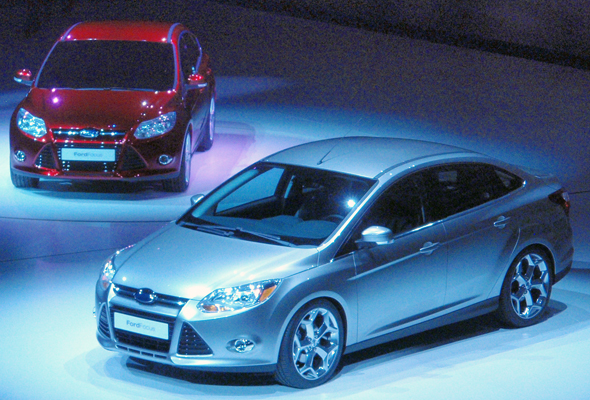
DETROIT, MICH. — The Detroit International Auto Show opened with an enormous day for Ford Motor Company, which claimed a sweep of both the North American Car of the Year award, with the Ford Fusion Hybrid, and the Truck of the Year, with the Ford Transit Connect.
By coincidence, Ford was scheduled to have the first corporate press conference at Cobo Hall following the presentation of the car and truck of the year awards. Ford earlier had announced that it would be introducing the 2011 Ford Fiesta, a smaller compact car that has been available in Europe since being taken out of the U.S. market a couple of decades ago, and is coming back as a stylishly rebuilt new compact with a lot of technology aimed at super high mileage.
If the Fiesta spearheads a movement by U.S. consumers toward compact, sophisticated, high-mileage cars, Ford’s new Fiesta could be making a serious run at the 2011 Car of the Year as well.
Then, at its press conference, an entirely redone global Focus was introduced in production form, aimed at being a 2012 vehicle. This one will unite the technical global coordination that will unite the European Focus with the less-sophisticated U.S. Focus. The new car will be made of 55 percent high-strength steel with a new platform growing out of Volvo’s safety characteristics from the S40, with the engine-building skill of Mazda with a 2.0-liter 4-cylinder.
With the 2012 Focus aimed at establishing new gasoline-engine standards for the larger compact segment, Ford added that it would also include a plug-in all-electric hybrid version of the Focus with the technology built in the Michigan Assembly Plant.
William Ford, executive chairman, said tht economy, energy and environment will be the three primary targets of the recovering auto industry and that the company that best combines those three virtues will be the winner. Without a doubt, Ford intends to see that Ford is that winner. “For 30 years, I’ve been advocating fuel-efficiency and lower emissions,” Ford said. “Now I’m preaching to the choir.”
While Ford didn’t need to file bankruptcy or to accept government bailout loans to stay afloat in the past year, Ford’s giant rival, General Motors, followed Ford in scheduled press conferences. GM had introduced a glistening Regal GS model, boasting of 355 horsepower and flashy 0-60 times.
To be fair, GM had introduced the 2011 Buick Regal at the Los Angeles Auto Show a month earlier, so it wanted to roll out a special model of the car for its hometown backers. But in overview, when GM has been filling the television airwaves with promotions and advertising for its still-struggling vehicles, here was GM following Ford’s highly economical Car of the Year, Truck of the Year, and Fiesta plus the Focus — all aimed at lofty fuel economy — and General Motors showed off a high-performance car with raves of high horsepower and snappy acceleration. It was quite a contrast.
Other impressive displays also featured high mileage and alternative energy. Chevrolet did show off its coming Cruze, which will replace the Cobalt, while Toyota unveiled a concept 2-door coupe hybrid, and Honda did the same, following up its previous show of a CR-Z concept car with the production prototype of the car, which is a hybrid that appears to be a sleek coupe version of the Insight.
Volkswagen also showed off a future car called, imaginatively, the NCC — for New Car Concept. It is an impressively styled 2-doorwith sweeping creases and contours, which reportedly is a precursor of what the redesigned 2011 Jetta will look like.
{IMG2}
BMW showed a pure electric sports coupe with spectacular looks and a 165-mile cruising range, and claimed that media test drives of its hybrid will be conducted in the first half of this year.
Korean leader Hyundai showed the new Sonata that drew raves at the LA show, and it looked even better in person. It will be powered by only 4-cylinder engines, one with a turbocharger. Hyundai also unveiled its facelifted Santa Fe and an all-new Tucson.
Ford officials could leave Cobo Hall feeling good about its achievements at the show, almost as if its awards were rewards for being ahead of its domestic competitors and avoiding the bailouts. Its car and truck awards were highlights.
In what seemed like the most competitive field ever, the Fusion Hybrid, which was isolated from the other revised Fusion models as a separate candidate, ran away with the car award, amassing 282 points on a voting system where the 50 jury members distribute a total of 25 points to the field of candidates, with a maximum of 10 to any one car. The Volkswagen Golf/GTI/TDI placed second with 163 points, and the Buick Lacrosse was third with 134.
In a revote of the three top point-getters, with 10 points to be cast in any order, the Fusion Hybrid had 241, with the Golf 146 and the Lacrosse 103.
The point distribution spread out support among those that missed reaching the final three, as the Ford Taurus had 79 to rank a distant fourth, followed by the Camaro 74, Porsche Panamera 67, Mazda3 at 64, Suzuki Kizashi 57, Toyota Prius 56, Kia Soul 55, Subaru Legacy 47, BMW 335d44, the remaining Fusion lineup 33, Cadillac CTS Wagon 25, Mercedes E-Class 23, and Honda Insight 22.
In Truck of the Year, the Transit Connect may have benefitted by being a legitimate truck, albeit a compact delivery vehicle, compared to the array of crossover SUVs and grown up station wagons. The Transit Connect scored 237 points to lead the three finalists, where it was joined by the Chevrolet Equinox at 217, and the Subaru Outback at 145.
The remainder show the Audi Q5 at 125, the Land Rover LR4 116, the Volvo XC60 110, Lincoln MKT 96, Cadillac SRX 92, followed by a late-released pair — the Acura ZDX 45 and the Honda Accord Crosstour 42.
In the final revote of the three finalists, the Transit Connect had 213, the Equinox 183, and the Outback 94.


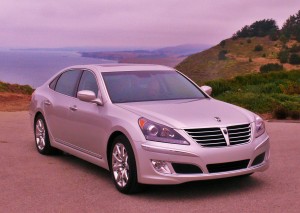
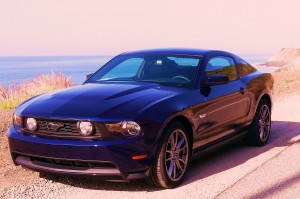
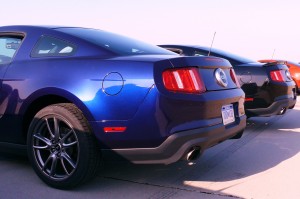
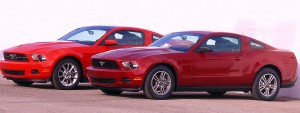
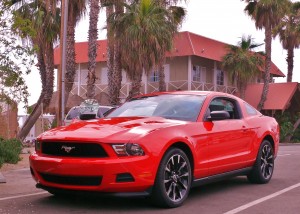
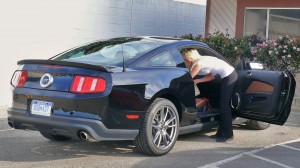
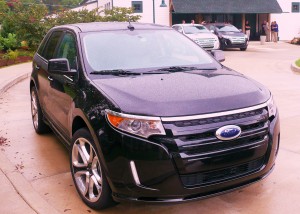
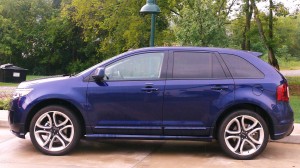
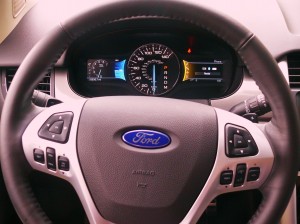
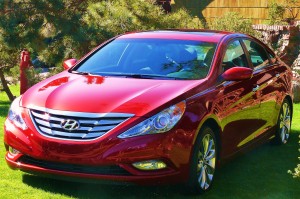
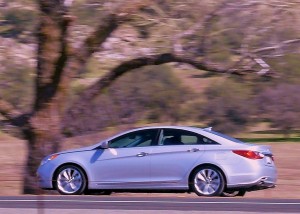
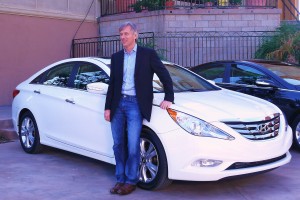
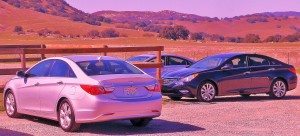
 John Gilbert is a lifetime Minnesotan and career journalist, specializing in cars and sports during and since spending 30 years at the Minneapolis Tribune, now the Star Tribune. More recently, he has continued translating the high-tech world of autos and sharing his passionate insights as a freelance writer/photographer/broadcaster. A member of the prestigious North American Car and Truck of the Year jury since 1993. John can be heard Monday-Friday from 9-11am on 610 KDAL(www.kdal610.com) on the "John Gilbert Show," and writes a column in the Duluth Reader.
John Gilbert is a lifetime Minnesotan and career journalist, specializing in cars and sports during and since spending 30 years at the Minneapolis Tribune, now the Star Tribune. More recently, he has continued translating the high-tech world of autos and sharing his passionate insights as a freelance writer/photographer/broadcaster. A member of the prestigious North American Car and Truck of the Year jury since 1993. John can be heard Monday-Friday from 9-11am on 610 KDAL(www.kdal610.com) on the "John Gilbert Show," and writes a column in the Duluth Reader.